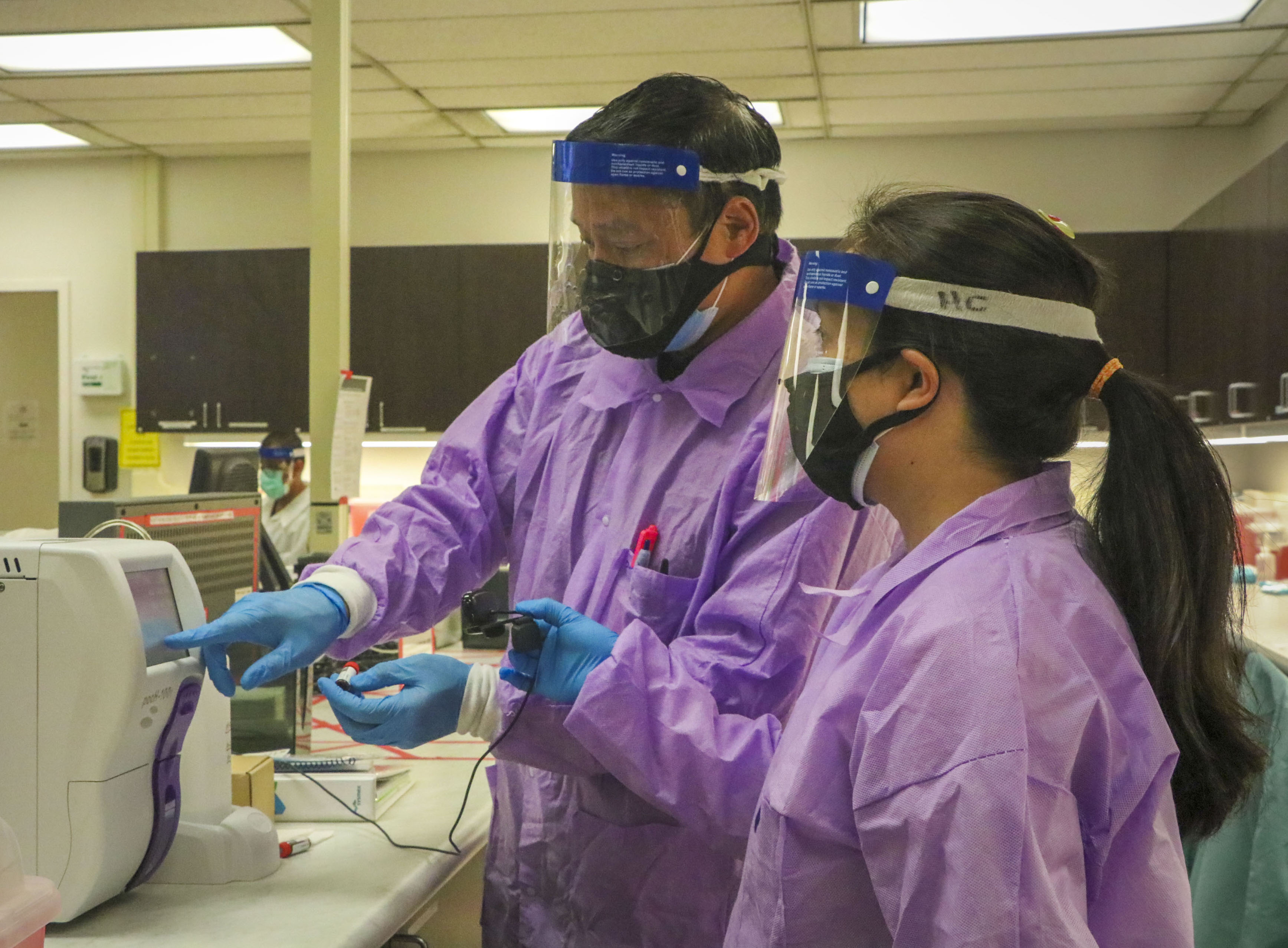News Release
FOR IMMEDIATE RELEASE
2021-01-05-essentialinfrastructure
January 5, 2021
Preparing Students for the Workforce
Although College of the Canyons was limited to remote instruction during the fall
2020 semester, it was clear that not everything could be properly taught over Zoom.
Students enrolled in essential infrastructure programs such welding, culinary arts,
automotive technician, medical laboratory technician, emergency medical technician
(EMT), land surveying, construction management and technology, and nursing need hands-on
training to be prepared to enter the workforce.
After following state and county protocols in order to receive the necessary clearance
to begin hosting on-campus classes, the college began to offer in-person instruction
for more than 50 class essential infrastructure class sections to provide students
with hands-on training during the fall 2020 semester.
As a result, countless of students have secured employment and four nursing graduates
and 37 EMT graduates will qualify for national licensure examinations.
“Being able to finish their training in person gives students the technical and dexterity
skills they need,” said Cindy Schwanke, chair of the college’s culinary arts program.
“It’s hard to teach that online.”
After adjusting syllabi and undergoing training to teach online, the culinary arts
department restructured its program to teach beginning courses online and reserve
in-person instruction for advanced students who are finishing their degrees.
“We were very grateful that the college allowed us to come back on campus,” said Schwanke.
“I was happy for the students.”
On a Tuesday morning at the College of the Canyons Institute for Culinary Education,
five masked students gathered around a large steel table to watch as Chef Michelle
Razzano poured liquid nitrogen over a bowl of marshmallows. Next door, Chef Daniel
Otto taught students how to properly sear a steak. In another corner of the building,
Schwanke’s students poured chocolate under her watchful and skilled eye.
“When they walk into a professional kitchen or pastry shop, they’re not walking into
it cold,” explained Schwanke. “It gives them a sense of familiarity in a kitchen and
the basic skills to move so they’re not training on the job.”
Once given the green light for in-person instruction, the college’s Medical Lab Technician
(MLT) program also reconsidered its instruction methods to best teach students during
the pandemic, which has spurred creativity among faculty.
“We are using more videos and audio recorded instruction to help our students know
what we will be doing in lab ahead of time,” said Dr. Hencelyn Chu, chair of the
MLT program at the college. “This helps students anticipate and plan for the lab
activities, which has increased our efficiency to accomplish the tasks in a timely
manner on campus. Students come to class prepared and ready to go.”
Still, the adjustment process has been challenging for faculty and students alike.
“I did not realize how facial expressions, specifically, during the on-campus instruction,
significantly impacted instruction,” said Chu. “Students can see when you smile when
encouraging them to keep going, while learning a new skill. That is tough to do with
the masks on.”
In a recent lab lecture, four socially distanced students were present as
Dr. Chu filmed a lab lecture on how to operate a blood count analyzer with the help
of an aide.
“Having students observe how to perform new techniques and skills live is critical
to the students’ abilities to connect lecture theory with lab experience,” said Chu.
“Online simulation activities are important. However, they do not replace hands-on
activities in the lab.”
To that end, on-campus courses are designed to maximize opportunities for students
to develop their skill sets and increase their confidence.
“Such activities will help them perform safely and effectively at the clinical sites
during year two of the program,” said Chu. “Without the on-campus lab courses, they
may not be able to practice safety skills and techniques and develop the confidence
that they need to succeed in their clinical training and subsequent employment.”
The experience students acquire in clinical lab courses can help them obtain jobs
as lab assistants and entry-level positions in clinical labs, added Chu.
“This is currently in demand, as many COVID-19 testing facilities are hiring specimen
processors, lab assistants, and non-technical staff members to help with the increased
testing labs,” said Chu.
Citing a MLT shortage in California and in many parts of the country, Chu says training
the next generation of MLTs has never been more crucial.
“Physicians and health care practitioners rely on our services to diagnose and monitor
treatment for all patients, including those with underlying conditions and COVID-19
patients,” said Chu.
The demand is so high that several students are already employed as phlebotomists
and lab assistants in various facilities.
“Because of the recent COVID-19 surge, it has impacted their ability to concentrate
on school work because they are picking up extra shifts at the hospitals to cover
for colleagues who are COVID-19 positive and are unable to work,” said Chu. “These
are very challenging times for our students right now.”



